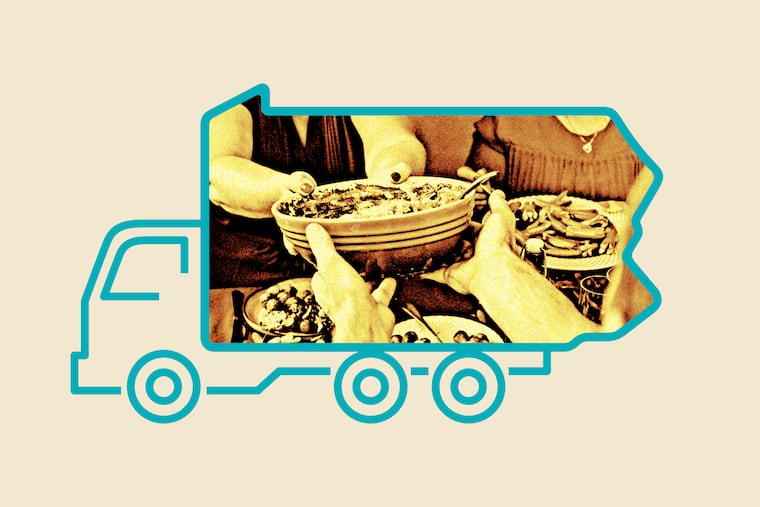Pa. is expanding eligibility for SNAP benefits, also known as food stamps
As a pediatrician in Philadelphia, I am thrilled that the state is expanding this support. However, lawmakers must continue to work toward a future where no child is hungry.

In 2020, the number of Pennsylvanians experiencing food insecurity was 1,136,400, or about twice the population of the entire state of Wyoming. Fortunately, that number may begin to fall this month.
That’s thanks to new legislation signed by the Wolf administration that expands the ranks of those who are eligible for the Supplemental Nutrition Assistance Program (SNAP), formerly known as the food stamp program. Since Oct. 1, 420,000 more Pennsylvanians have been eligible to receive monthly benefits to help cover the cost of food. Under the previous terms of the program, households without elderly or disabled members could only qualify if they earned less than 160% of the federal poverty income guidelines. Now those earning under 200% do, too.
This policy change is particularly important in Philadelphia, where more than a quarter of food-insecure residents fall between these income thresholds — under the old standard, their incomes were too high to qualify for SNAP but too low to afford the food they need. As a pediatrician in Philadelphia who cares for many children and families facing food insecurity, I am thrilled that the state is expanding this support. However, lawmakers must continue to work toward a future where no child, in our state or any other, is hungry. There is still more work to do.
During a recent afternoon in clinic, I met a working mom of an adorable 3-year-old who shared her growing struggles providing food for her toddlers. Their day care unexpectedly stopped offering meals and snacks. No longer able to count on these meals and with rising food prices, she was worried, anxious, and tearful that she wouldn’t be able to feed them. Unfortunately, I care for many families who earn too much to qualify for SNAP, but are just one crisis away from food insecurity.
While we were able to provide a supply of groceries to her through our clinic’s food pharmacy, this is only a short-term fix. Broader policy change — with the SNAP expansion as one example — is essential to achieve long-term food security for families.
Making it easier to afford enough healthy food is important for all households, but particularly those with children. Among kids, not having enough food to eat is associated with worse health outcomes, including developmental delays and behavioral problems. Food insecurity is also linked to more absences from school and less access to preventive health care, which are both important for kids’ long-term health and development.
SNAP provides critical support to households across the country. In 2019 alone, SNAP reached 38 million people nationwide, with two-thirds being families with children. SNAP can be a lifeline for parents with low-paying jobs (or those who unexpectedly lose work) to help them feed themselves and their children.
But the benefits of SNAP go beyond just access to food. Children who receive SNAP are less likely to be in poor health. Moms who receive SNAP during pregnancy are less likely to have low birthweight babies. In addition, families receiving SNAP are less likely to report making difficult trade-offs between paying for health care and other basic needs like food. The impossible choice many families make between health care and food is common enough that it even has its own term in medical literature: “treat or eat.”
SNAP also pays dividends in the long run. Children with access to SNAP are more likely to graduate from high school, earn more at their jobs when they enter the workforce, and rely less on government assistance programs as adults. This suggests that improving the social safety net for families with young children may, in part, “pay for itself” by reducing the need for government support in the long term.
“Improving the social safety net for families with young children may, in part, ‘pay for itself’ by reducing the need for government support in the long term.”
For all of these reasons, I commend the Wolf administration and others who have long advocated for the SNAP expansion. Children across the state, including many of my patients, will directly benefit from this policy.
» READ MORE: Ending hunger in Philadelphia requires cooperation
However, while we celebrate the state’s SNAP expansion, we must also recognize that this alone is not enough. With one in eight children in Pennsylvania experiencing hunger (and one in 11 people overall), more will need to be done.
This includes making it easier for families eligible for SNAP and other nutrition assistance programs to actually access their benefits. Pennsylvania can achieve this by making permanent the policies introduced during the pandemic to simplify enrollment and recertification. Lawmakers must also reengage around expired policies that provide unrestricted income support, like the expanded child tax credit, which itself was associated with more households with children being able to afford enough food.
As the White House pushes a national strategy to end hunger by 2030, Pennsylvania can and should help lead the charge. My patients and their families are counting on it.
Zoe Bouchelle is an associate fellow at the Leonard Davis Institute of Health Economics at the University of Pennsylvania, a general pediatrician, and a mom in Philadelphia. For those who believe they or their families may be newly eligible for SNAP, you can learn more and apply here.